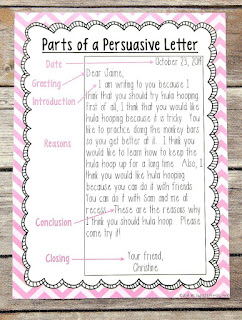Persuasive Writing Anchor Chart - A Guide to Effective Persuasion
Introduction
Persuasive writing is a powerful tool that allows individuals to influence or convince others to adopt a certain point of view or take specific actions. It is a skill that finds application in various fields such as advertising, politics, and even everyday conversations. To master the art of persuasive writing, having a reliable anchor chart can be immensely helpful. An anchor chart serves as a visual aid and reference guide, providing writers with a framework to craft compelling and convincing arguments.
The Importance of an Anchor Chart
An anchor chart is an essential tool for any persuasive writer. It serves as a constant reminder of the key components and techniques required to make a persuasive piece effective. By having an anchor chart, writers can ensure that their arguments are structured, logical, and presented in a persuasive manner. It helps to organize thoughts and ideas, ensuring that all crucial aspects are covered.
Components of a Persuasive Writing Anchor Chart
When creating a persuasive writing anchor chart, there are several components to consider:
- Introduction: The anchor chart should emphasize the importance of a strong introduction. It should encourage writers to captivate their audience from the beginning, presenting a clear thesis statement and providing background information on the topic.
- Claim: A persuasive piece is built around a central claim. The anchor chart should guide writers on how to choose a compelling claim and support it with relevant evidence or examples.
- Evidence: Persuasive writing relies on providing convincing evidence to support the claim. The anchor chart should remind writers to gather reliable sources and present the evidence in a coherent and persuasive manner.
- Counterarguments: Acknowledging potential counterarguments is crucial in persuasive writing. The anchor chart should encourage writers to address opposing viewpoints and provide counterarguments to strengthen their own claims.
- Language and Tone: Persuasive writing requires using language and tone that appeal to the emotions and logic of the audience. The anchor chart should provide examples of persuasive language and encourage writers to engage their readers effectively.
- Conclusion: A persuasive piece should conclude with a strong closing statement that reinforces the main argument. The anchor chart should outline strategies for writing an impactful conclusion that leaves a lasting impression on the reader.
Benefits of Using an Anchor Chart
Utilizing an anchor chart for persuasive writing offers several benefits:
- Clear Structure: An anchor chart provides a clear structure for writers to follow, ensuring their arguments are well-organized and easy to understand.
- Enhanced Persuasiveness: Employing the techniques and strategies outlined in an anchor chart can significantly enhance the persuasiveness of a piece of writing.
- Consistency: Writers can refer to the anchor chart to maintain consistency throughout their work, avoiding contradictory statements or weak arguments.
- Improved Focus: The visual representation of an anchor chart helps writers stay focused on the essential elements of persuasive writing, producing more compelling and impactful content.
- Time Efficiency: Having a reliable anchor chart saves time, as writers no longer need to search for guidelines or repeatedly revise their work.
Conclusion
A persuasive writing anchor chart serves as a valuable resource, offering guidance and structure to writers seeking to develop effective persuasive pieces. By utilizing an anchor chart, writers can enhance their persuasive skills, deliver convincing arguments, and ultimately achieve their desired outcomes. So, whether you are a student, professional, or simply someone who wants to express their ideas persuasively, consider creating or referring to an anchor chart to unlock the power of persuasive writing.

No comments:
Post a Comment